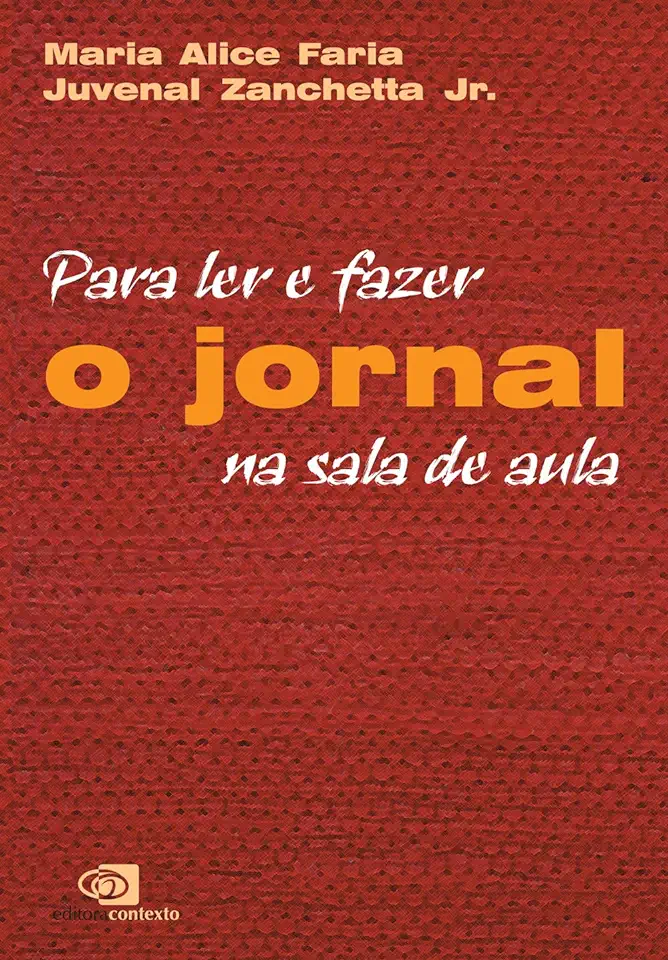
To Read and Make the Newspaper in the Classroom - Maria Alice Faria/Juvenal Zanchetta Jr.
To Read and Make the Newspaper in the Classroom: A Comprehensive Guide for Educators
Introduction
In today's fast-paced world, where information is constantly bombarding us from all sides, it has become more important than ever to teach students how to critically analyze and evaluate the news and media they consume. "To Read and Make the Newspaper in the Classroom" by Maria Alice Faria and Juvenal Zanchetta Jr. offers a comprehensive guide for educators on how to incorporate newspaper reading and analysis into their teaching practices, empowering students to become informed and responsible citizens.
Key Features
1. Engaging and Interactive Approach:
The book presents a hands-on approach to teaching with newspapers, transforming the classroom into a dynamic learning environment. Students actively engage with real-world news articles, fostering critical thinking, analytical skills, and a deeper understanding of current events.
2. Comprehensive Coverage:
"To Read and Make the Newspaper in the Classroom" covers a wide range of topics, including:
- Selecting appropriate newspapers for the classroom
- Analyzing news articles and identifying bias
- Understanding the structure and language of news reporting
- Creating and conducting newspaper-based activities
- Integrating newspaper reading into various subjects
3. Practical Activities and Lesson Plans:
The book provides a wealth of practical activities and lesson plans that can be easily integrated into any curriculum. These activities encourage students to read, analyze, and discuss news articles, fostering a deeper understanding of the world around them.
4. Real-World Examples and Case Studies:
The authors draw upon real-world examples and case studies to illustrate the concepts and strategies discussed in the book. These examples help students connect theory to practice, making the learning experience more relevant and engaging.
5. Assessment and Evaluation:
The book also includes guidance on assessing and evaluating students' progress and understanding of the material. This helps educators track students' development and make necessary adjustments to their teaching strategies.
Benefits for Educators and Students
"To Read and Make the Newspaper in the Classroom" offers numerous benefits for both educators and students:
1. Enhanced Critical Thinking Skills:
By analyzing news articles and identifying bias, students develop critical thinking skills that are essential for success in the 21st century.
2. Improved Media Literacy:
Students gain a deeper understanding of the media landscape and how news is reported, making them more discerning consumers of information.
3. Increased Civic Engagement:
The book encourages students to become active participants in society by understanding current events and engaging in informed discussions.
4. Cross-Curricular Integration:
Newspaper reading and analysis can be integrated into various subjects, such as language arts, social studies, history, and current events, providing a holistic learning experience.
5. Fostering a Love for Reading:
By using newspapers as a teaching tool, educators can instill a love for reading in students, encouraging them to become lifelong learners.
Conclusion
"To Read and Make the Newspaper in the Classroom" is an invaluable resource for educators who want to empower their students to become informed, critical thinkers and responsible citizens. With its engaging approach, comprehensive coverage, and practical activities, this book provides a roadmap for integrating newspaper reading and analysis into the classroom, fostering a deeper understanding of the world we live in.
Enjoyed the summary? Discover all the details and take your reading to the next level — [click here to view the book on Amazon!]